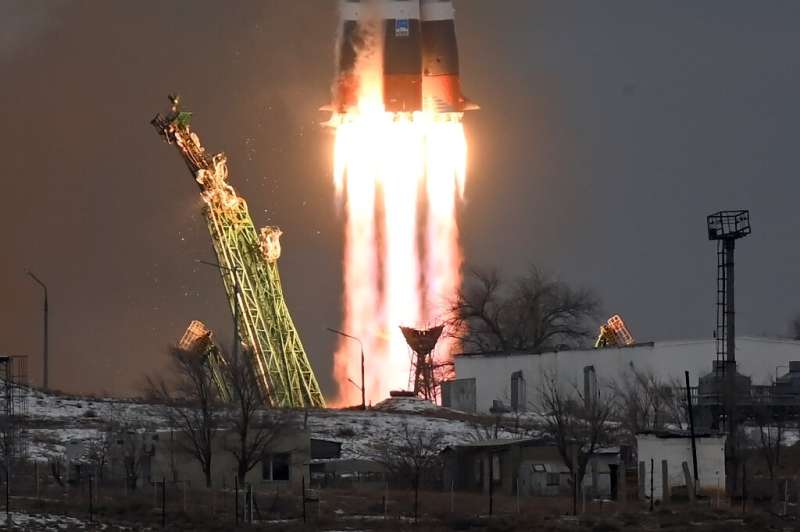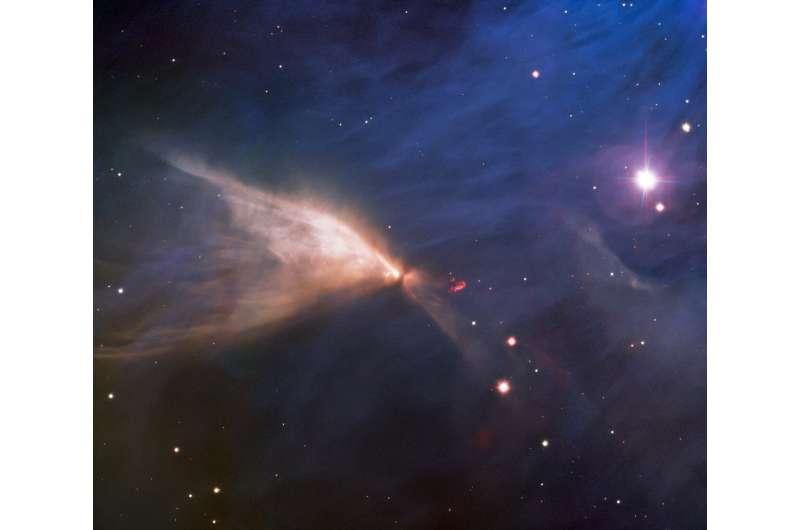Northrop Grumman and Raytheon Technologies Team Approved for Next Generation Interceptor Digital Software Factory
Wednesday, 08 December 2021 09:31 The U.S. Missile Defense Agency (MDA) has approved the Northrop Grumman Corporation (NYSE: NOC) and Raytheon Missiles and Defense Next Generation Interceptor (NGI) team's common software factory solution and its associated digital infrastructure following successful testing.
With this accredited digital ecosystem in place, the program is set to seamlessly integrate, make critical decisions
The U.S. Missile Defense Agency (MDA) has approved the Northrop Grumman Corporation (NYSE: NOC) and Raytheon Missiles and Defense Next Generation Interceptor (NGI) team's common software factory solution and its associated digital infrastructure following successful testing.
With this accredited digital ecosystem in place, the program is set to seamlessly integrate, make critical decisions AFRL opens state-of-the-art digital Space Legacy Portal exhibit
Wednesday, 08 December 2021 09:31 With a video of the historic 1969 Apollo 11 launch shown on the nearly two-story screen behind him, Dr. Darren Raspa, the Air Force Research Laboratory Phillips Research Site historian, welcomed guests and colleagues to the grand opening of the AFRL Space Vehicles Directorate's Legacy Portal Mission Control exhibit, in a ceremony held November 15 at Kirtland AFB.
"This project began more t
With a video of the historic 1969 Apollo 11 launch shown on the nearly two-story screen behind him, Dr. Darren Raspa, the Air Force Research Laboratory Phillips Research Site historian, welcomed guests and colleagues to the grand opening of the AFRL Space Vehicles Directorate's Legacy Portal Mission Control exhibit, in a ceremony held November 15 at Kirtland AFB.
"This project began more t Space Force plans to launch experimental satellites early Sunday
Wednesday, 08 December 2021 09:31 The U.S. Space Force plans to launch a cluster of experimental satellites known as STP-3, including a NASA laser communications spacecraft, into orbit Sunday morning from Florida.
United Launch Alliance has scheduled liftoff of the Atlas V rocket during a two-hour window starting at 4:04 a.m. EST from Complex 41 at Cape Canaveral Space Force Station.
The mission was delayed for various re
The U.S. Space Force plans to launch a cluster of experimental satellites known as STP-3, including a NASA laser communications spacecraft, into orbit Sunday morning from Florida.
United Launch Alliance has scheduled liftoff of the Atlas V rocket during a two-hour window starting at 4:04 a.m. EST from Complex 41 at Cape Canaveral Space Force Station.
The mission was delayed for various re Light speed advances
Wednesday, 08 December 2021 09:31 Every time someone sends a message or posts to TikTok, it takes thousands of optical and electrical connections to get that message through. But what if there was a way to manipulate the power of light to create technology that makes these connections more stable and more energy efficient?
That's precisely what Tingyi Gu is working on in the University of Delaware's Department of Electrica
Every time someone sends a message or posts to TikTok, it takes thousands of optical and electrical connections to get that message through. But what if there was a way to manipulate the power of light to create technology that makes these connections more stable and more energy efficient?
That's precisely what Tingyi Gu is working on in the University of Delaware's Department of Electrica Airbus completes second ocean satellite Sentinel-6B
Wednesday, 08 December 2021 09:31 Airbus has completed Sentinel-6B, the second ocean monitoring satellite of the European Copernicus programme, and is now testing it extensively over the next six months in preparation for its use in space.
"Copernicus Sentinel-6" mission is already delivering high-precision measurement of the topography of ocean surfaces through the first of two satellites, "Sentinel-6A", launched in Novem
Airbus has completed Sentinel-6B, the second ocean monitoring satellite of the European Copernicus programme, and is now testing it extensively over the next six months in preparation for its use in space.
"Copernicus Sentinel-6" mission is already delivering high-precision measurement of the topography of ocean surfaces through the first of two satellites, "Sentinel-6A", launched in Novem $1.5M advances hypersonics research and technology at UArizona
Wednesday, 08 December 2021 09:31 The University Consortium for Applied Hypersonics awarded its first round of funding, totaling $25.5 million, to projects that advance the field of hypersonic flight, in which vehicles travel upwards of five times the speed of sound.
Samy Missoum, a professor of aerospace and mechanical engineering at the University of Arizona, received $1.5 million to lead the development of a surrogate a
The University Consortium for Applied Hypersonics awarded its first round of funding, totaling $25.5 million, to projects that advance the field of hypersonic flight, in which vehicles travel upwards of five times the speed of sound.
Samy Missoum, a professor of aerospace and mechanical engineering at the University of Arizona, received $1.5 million to lead the development of a surrogate a NASA's latest astronaut trainees are already dreaming of the Moon
Wednesday, 08 December 2021 08:20
As a former national team cyclist who'd fix her own bikes, and before that as a child helping out on her family's cattle farm, NASA trainee astronaut Christina Birch has plenty of experience working with her hands.
With America's sights now set on returning to the Moon—this time establishing long-term habitats—Birch is dreaming big: "If I could assist the mission in any way, by helping build something on the Moon, that would be super cool," she told AFP.
The 35-year-old is one of ten new recruits announced by the US space agency this week, the latest members of what it calls the "Artemis generation," named for the Artemis program to put American boots on lunar soil later this decade, and later on to Mars.
Selected from a competitive field of 12,000 applicants, their diverse profiles have been picked with the goal of accomplishing humankind's toughest exploration missions to date.
Among them are high-level scientists. Chris Williams, 38, is a medical physicist and assistant professor at Harvard, whose research focused on developing image guidance techniques for cancer treatments.
Russian rocket carrying Japanese billionaire docks at ISS
Wednesday, 08 December 2021 08:16
A Russian rocket lifted off on Wednesday carrying a Japanese billionaire to the International Space Station, marking the country's return to space tourism after a decade-long pause that saw the rise of competition from US companies.
Online fashion tycoon Yusaku Maezawa and his production assistant Yozo Hirano blasted off from the Russian-operated Baikonur cosmodrome in Kazakhstan at 0738 GMT, an AFP correspondent at the scene reported.
Their journey aboard the three-person Soyuz spacecraft piloted by cosmonaut Alexander Misurkin will take just over six hours, capping a banner year that many have seen as a turning point for private space travel.
Billionaires, Elon Musk, Jeff Bezos and Richard Branson all made breakthrough commercial tourism flights this year, bursting into a market Russia is keen to defend.
Japanese billionaire arrives at ISS
Wednesday, 08 December 2021 08:16
A Russian rocket lifted off on Wednesday carrying a Japanese billionaire to the International Space Station, marking the country's return to space tourism after a decade-long pause that saw the rise of competition from US companies.
Online fashion tycoon Yusaku Maezawa and his production assistant Yozo Hirano blasted off from the Russian-operated Baikonur cosmodrome in Kazakhstan at 0738 GMT, an AFP correspondent at the scene reported.
Their journey aboard the three-person Soyuz spacecraft piloted by cosmonaut Alexander Misurkin will take just over six hours, capping a banner year that many have seen as a turning point for private space travel.
Billionaires, Elon Musk, Jeff Bezos and Richard Branson all made breakthrough commercial tourism flights this year, bursting into a market Russia is keen to defend.
Former JSC director Mark Geyer passes away
Tuesday, 07 December 2021 23:52
Mark Geyer, former head of the Johnson Space Center and manager of the Orion program, died Dec. 7 of cancer.
Tomorrow.io to grow weather constellation through SPAC deal
Tuesday, 07 December 2021 22:10
Tomorrow.io said Dec. 7 it stands to raise up to $420 million for its planned network of weather satellites by merging with Pine Technology Acquisition Corp., the latest special purpose acquisition company (SPAC) to invest in the space industry.
Gemini South telescope catches a one-winged butterfly
Tuesday, 07 December 2021 20:46
Final defense bill nixes space guard, directs classification review of space programs
Tuesday, 07 December 2021 20:34
The Senate and House Armed Services Committees in a compromise National Defense Authorization Act for Fiscal Year 2022 removed language that would have created a Space National Guard, and included a provision directing DoD to identify space programs that could be declassified.
Valley Tech Systems wins $94 million missile defense contract
Tuesday, 07 December 2021 18:07
Valley Tech Systems, a firm recently acquired by Voyager Space, won a $94 million contract from Lockheed Martin to provide a solid propulsion subsystem for the U.S. Missile Defense Agency’s Next Generation Interceptor.

